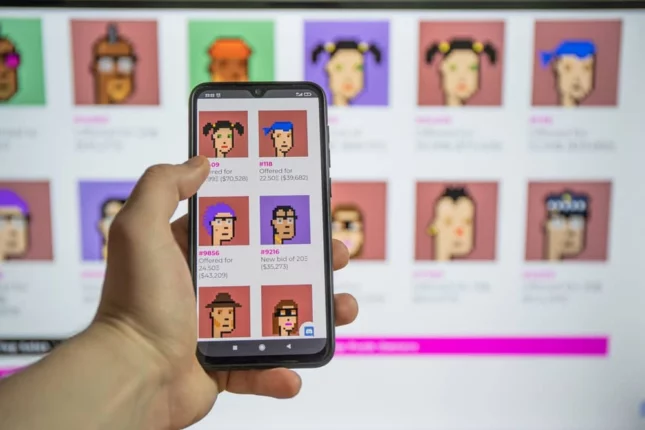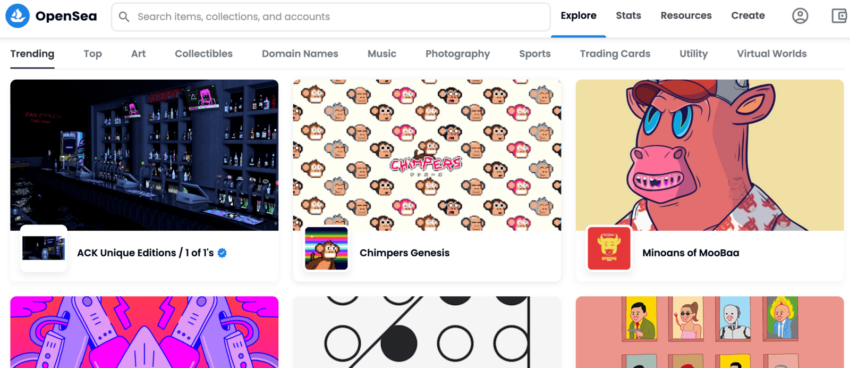If you’ve heard of crypto, then you’ve probably also heard the term NFT. But, are they the same thing? After all, both are digital assets that use cryptography to secure their transactions and ensure privacy. However, there is a big difference between these two asset types — one that could have a huge impact on how we use them in the future.
So what is the difference between cryptocurrencies and NFTs? Let’s take a closer look!
What is an NFT (Non-Fungible Token)?
NFT stands for “non-fungible token.” In the simplest terms, it is a type of digital asset that is not interchangeable with any other asset of its kind. That means that each NFT is unique and cannot be replaced by another token – even if that token is identical in every way.
In contrast, a fungible asset can be replaced by another identical copy without affecting the value of the original.

For example, government-issued currencies are fungible assets. If you have a $10 bill, it is worth the same as any other $10 bill. However, a work of art is a non-fungible asset. There is only one Mona Lisa, and no other painting can take its place.
This concept might seem abstract, but it is actually quite important. The fungibility of an asset has a big impact on how it can be used and exchanged.
How does NFT work?
Now that you know what an NFT is, you might be wondering how it actually works. After all, if each token is unique, how can you keep track of them all?
The answer lies in the blockchain — a digital ledger that records transactions chronologically and publicly. It is often used to create cryptocurrencies, but it can also be used to create and track NFTs.
When an NFT is created, it is assigned a unique identifier that is stored on the blockchain. This identifier allows the NFT to be tracked and exchanged like any other asset.
However, because each NFT has its own unique identifier, a bit like our fingerprints, they can never be replaced or interchanged. This is what makes them so valuable.
Types of NFTs
At this point, you might be wondering — what types of things can be turned into an NFT? Well, the short answer is, just about anything!
NFTs can represent digital or physical assets. They can be used to represent items like art, music, videos, or even real estate.
Some people have even begun to experiment with using NFTs to represent more abstract concepts, like ideas or thoughts. The sky is really the limit when it comes to what can be turned into an NFT.
Why are NFTs so expensive?
One of the most common questions people have about NFTs is why they are so expensive. After all, if they are just digital assets, why do some of them sell for millions of dollars?
The answer has to do with two factors — rarity and utility. As we mentioned before, each NFT is unique. That means that there are a limited number of each NFT in existence.
This rarity makes them valuable, but it is not the only factor. The other factor is utility. NFTs can be used to represent just about anything, which means that they have a lot of potential uses.
For example, an NFT could be used to represent a digital painting. However, it could also be used to represent a piece of land in the game Minecraft. The possibilities are endless, which makes NFTs very versatile.
This combination of rarity and utility is what makes NFTs so valuable. As more and more people begin to use and understand them, it is likely that their value will continue to increase.
What’s the difference between NFT and Cryptocurrency?
Now one question remains — what is the difference between NFTs and cryptocurrencies?
The answer lies in their fungibility. Cryptocurrencies are fungible assets, which means that each token is interchangeable with another. In contrast, NFTs are non-fungible assets, which means that each token is unique and cannot be replaced by another.
How to purchase an NFT
Are you interested in purchasing an NFT? If so, there are a few things you need to know.
First, you will need to find a marketplace that sells the type of NFT you are interested in. For example, if you want to purchase an art NFT, you might look for a marketplace that specializes in selling digital art.

Some of the most popular marketplaces for NFTs today include:
- OpenSea
- Rarible
- Foundation
- Bitski
- Enjin Wallet
- AsyncArt
- Axie Infinity
Once you have found a marketplace, you will need to create an account and deposit some funds. Then, you can browse the available NFTs and purchase the one you want.
It is important to remember that NFTs are unique assets. That means that once you purchase one, it is yours forever. You will not be able to exchange it or get a refund, so make sure you are certain you want it before you commit to the purchase.
FAQs
Can non-fungible tokens be stolen?
NFTs are digital assets that are stored electronically. That means that they are vulnerable to hacking and theft, just like any other digital asset.
If you are concerned about the security of your NFTs, you can store them in a secure wallet, like a hardware wallet. Hardware wallets are physical devices that store your digital assets offline, which makes them much less vulnerable to theft.
What if I lose my NFT?
If you lose your NFT, there is no way to recover it. NFTs are stored electronically, and they cannot be replaced if they are lost or stolen.
That is why it is so important to store your NFTs in a secure place.
What rights do I have with an NFT?
The rights you have with an NFT depend on the terms of the contract you signed when you purchased it. Make sure to read the terms of the contract carefully before you purchase an NFT, so you know what rights you are agreeing to.
In general, though, you can expect to have the right to use, sell, or transfer your NFT. You may also have the right to receive royalties if the NFT is sold or used in a certain way.
NFTs are a new type of asset that is created and tracked using blockchain technology. Each NFT is unique and cannot be replaced by another, which makes them very valuable.
As more people begin to use and understand them, it is likely that their value will continue to increase. So far, they have been used to represent a wide variety of assets, including art, music, videos, real estate, and even ideas.
The sky is the limit when it comes to what can be turned into an NFT, and the possibilities are endless. With that said, only time will tell what the future of NFTs holds. One way or another, they are sure to have a major impact on the world as we know it.
